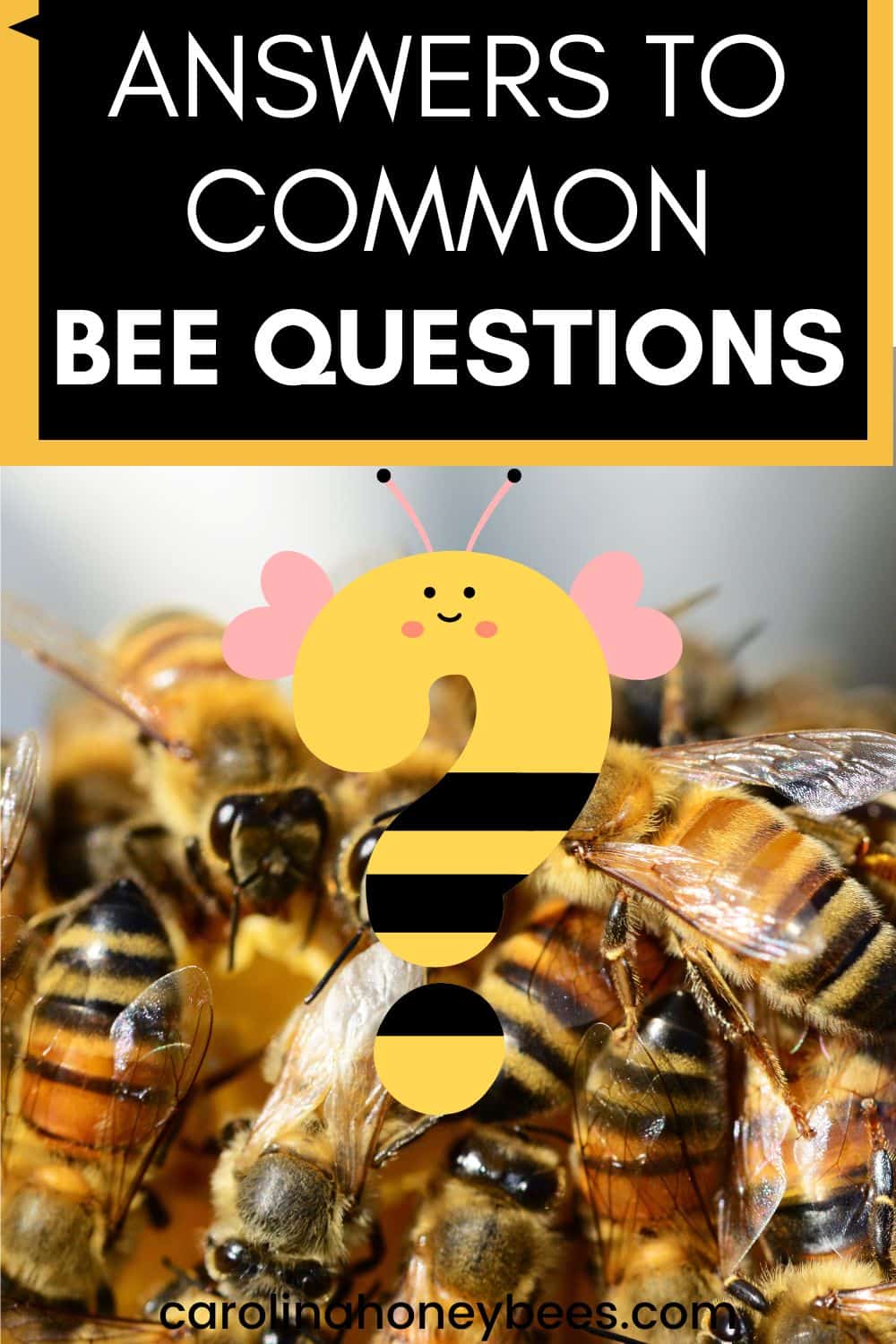Questions About Bees
Bees are remarkable creatures that spark a lot of curiosity in people of all ages. They play a major role in plant pollination and some bees produce sweet honey, we know much. But, there are still many questions about bees to ponder. In this guide, you will learn the answers to some of the most popular bee questions and hopefully have a better understanding of their amazing life.

As a beekeeper of many years, you might think I would know all the facts about bees -especially honey bees. But, in fact, even the researchers don’t know all the answers. We continue to learn more every year.
General Bee Questions
These questions cover the basics of what bees are, what they do and why they matter. The insect world contains many different bee species. They share some characteristics but also major differences in diet, nesting habits, lifespan etc.
1. What are Bees?
Bees are winged insects that are found on every continent of the world except Antarctica. They are the most popular insects and are closely related to wasps and ants.
While honey bees are insects, the only represent a small fraction of the insect world. Also, most bees do not make honey.
2. How Many Kinds of Bees are There?
There are more than 20,000 known species of bees found worldwide. They range in size from the smallest solitary bees to the large Bumble bees and Carpenter bees we commonly see in the garden.
3. What do Bees Eat?
Honey bees rely on plant nectar and pollen as their major food sources. Nectar provides carbohydrates and pollen gives the bees needed protein.
While many bees like nectar, some species have a much less restricted diet. They may eat floral oils, fungi, meat, other bees’ eggs, and even sweat and tears.
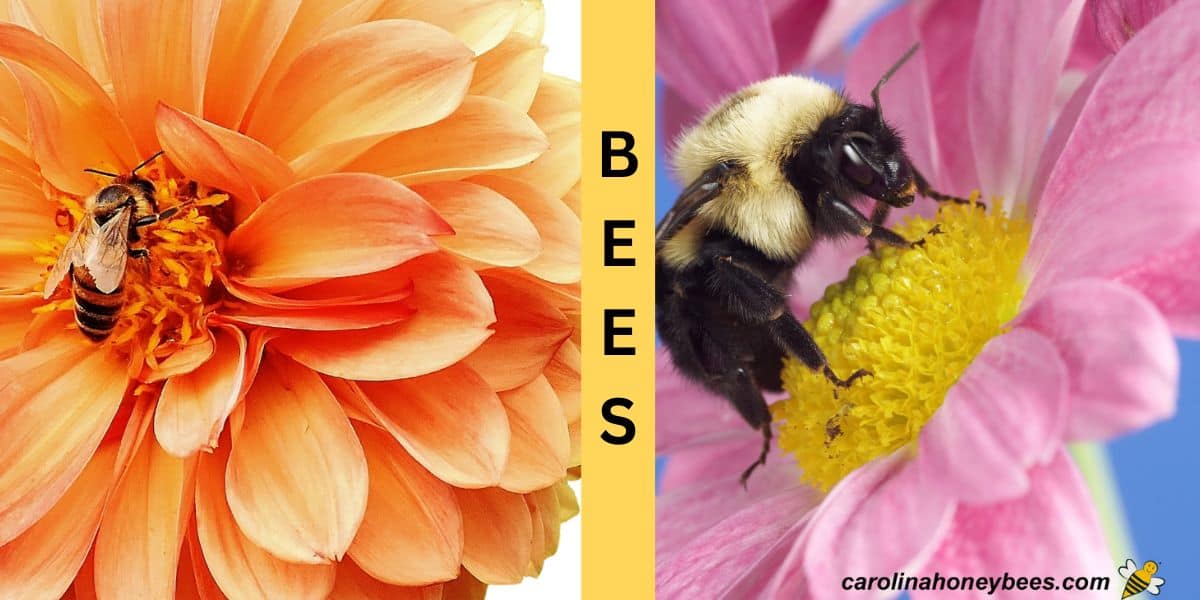
4. Where do Bees live?
Bees can live in gardens, woodlands, meadows and other locations that meet their habitat requirements. Honey bees may live in a hollow tree or in a beehive tended by a beekeeper.
Other species – such as Bumble bees, live underground in abandoned burrows. Some solitary bees make nests in hollow tubes or other plant materials.
5. Why are Bees Important to Humans?
Bees are widely recognized as important pollinators. In fact, honey bee pollination efforts are responsible for many crop foods that we enjoy.
But, pollination is important in other settings too. Native bees (and honey bees) help pollinate native plants that provide seeds and berries for many animals and birds.
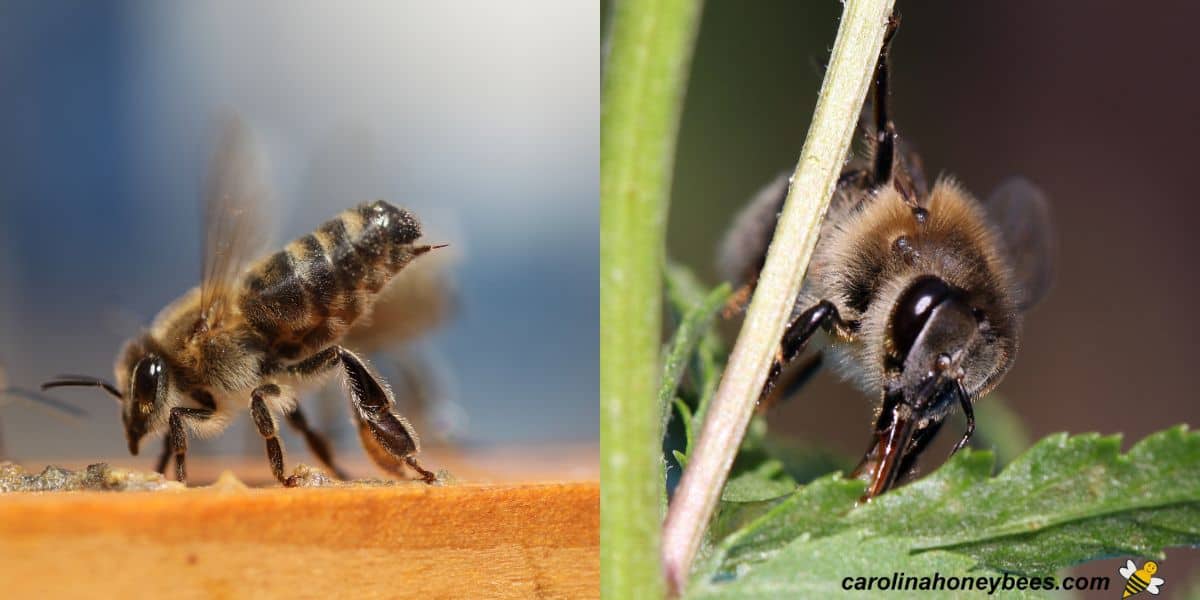
Honey Bees Specifically
Honey bees are the most well-known bee species, especially for their role in making honey. This section focuses on questions specific to these remarkable insects.
6. What is the Difference Between a Honey Bee and a Bumble Bee?
Honey bees live in large social colonies and over-winter as a group surviving on honey they have made and stored in the hive.
Bumble bees (vs Honey bees) have smaller families, they do not store food for long term use and only the mated queen survives Winter.
7. How do Bees Make Honey?
Honey bees make honey by gathering plant nectar from blooming plants and taking it back to the hive in their – honey stomach. They pass the nectar to other worker bees who complete the process.
Enzymes are added to break down sugars and the moisture content is reduced by evaporation, eventually sealing the thickened honey into wax cells for storage.
8. What is the Role of the Queen in the Hive?
The primary role of the queen bee in a colony is that of egg layer. She is the only mated member who can lay fertilized honey bee eggs that develop into female worker bees.
However, her special pheromones also promote colony unity. As the queen ages, pheromone levels drop and she will be replaced.
9. How Long do Bees Live?
Bees do not have a long lifespan and the time varies according to species. Many die with the end of the warm season – only reproductive females live until the new year.
Even among honey bees how long they live varies. Workers live from 6 weeks to 6 months but the queen bee capable of living for several years.
10. Do All Bees Sting?
Not all bees sting, some species are passive or have other ways to evade threats. Why do bees sting? Honey bees sting for defense. When threatened, female bees can sting while male bees or drones do not have stingers.
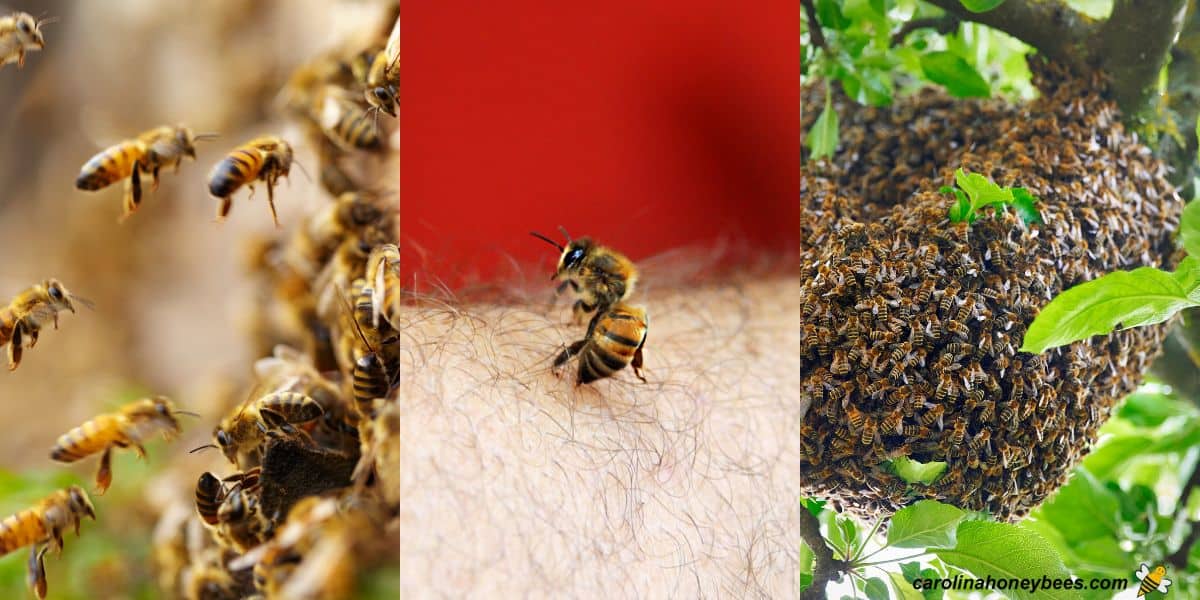
Bee Behavior & Life Cycle
Bees live complex lives and have fascinating behaviors. Here, we explore how bees communicate, reproduce, and survive from day to day.
11. How do Bees Communicate With Each Other?
Bees communicate with other members of their family in some of the same ways we do. Body language and eye contact reveals a bit about a bee’s intentions.
Worker honey bees dance to share the location of food sources with their sisters. They also use special bee pheromones (chemical messengers) that share information about colony conditions and even the approach of a predator.
12. Do Bees Sleep?
Yes, honey bees do sleep or at least rest-for a period of time inside the hive. This does not necessarily happen at night though it is common to finding foragers inactive on a quite spot of the comb.
13. What Happens if a Bee Stings You?
Honey bees usually die after stinging because they have a barbed stinger that gets stuck in your skin. When the stinger rips away, it takes part of the bee’s internal body parts with it.
14. Why do Bees Swarm?
Swarming is a natural part of honey bee life. When bees swarm, half of the colony and the old queen (usually) leave to form a new hive somewhere else. The remaining bees rear a new queen – now there are two colonies.
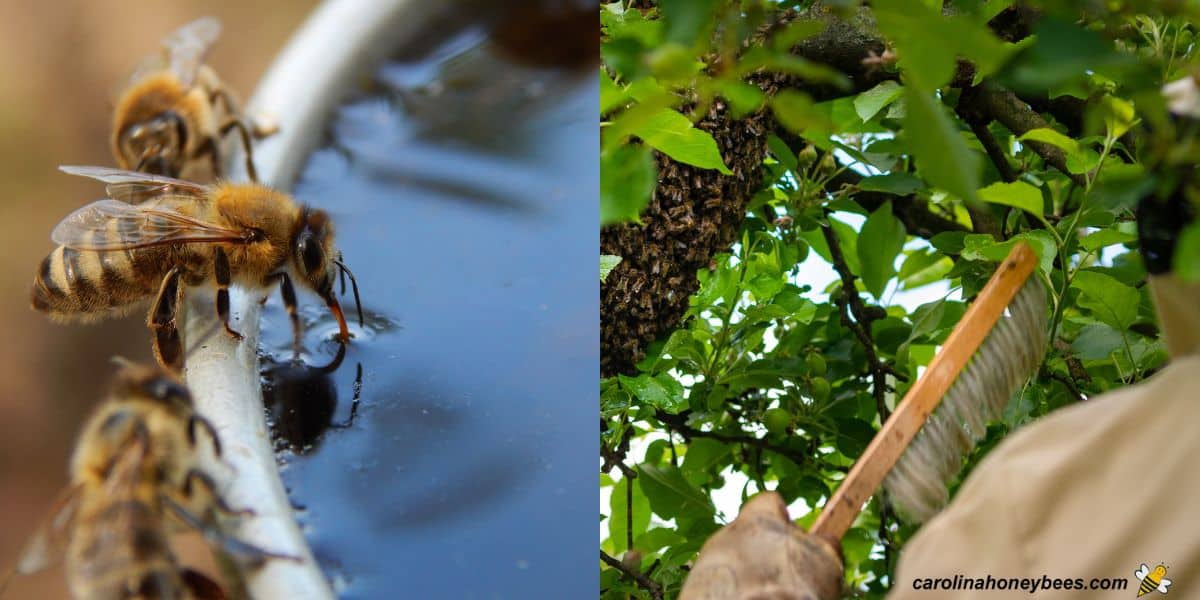
Bee & Human Interaction
Bees and humans cross paths more often than you might think. These questions address how to coexist with bees, support their survival, and understand their behavior in your space.
15. What should I do if I see a bee swarm?
Swarm are relatively harmless if not disturbed. Keep kids and pets away – the bees may move on by the next day.
Another option, call your agricultural extension and get the name and number for the local beekeepers association – someone would love to have that swarm.
16. Are Bees in Danger of Extinction?
Some bee species are at risk of extinction due to many factors. Honey bees are not endangered at this time.
However, they do serve as indicators of pollinator health in an ecosystem plagued by climate changes, pesticides and other pressures.
17. Why do Bees Come to My Garden or Pool?
Bees need food and water. Flowers providing nectar and pollen will attract bees. Likewise, that beautiful pool full of water promises a nice clean drink. If this is a big problem, provide alternative water sources for bees.
18. How Can I Help Save Bees?
There are many way individuals can help save bees. Plant bee friendly flowers, avoid the use of dangerous pesticides and support local beekeepers.

Fun & Curious Bee Questions
Have you ever wondered if bees sleep, have knees, or recognize faces? This final section dives into some of the most fun and surprising bee facts.
19. How Far Can Bees Fly in Search of Food?
Many bee species rely on finding food relatively close to their nest area-especially native bees like Bumble Bees. However, honey bees can travel 1-2 miles easily to a good food source.
20. How do Bees Find Their Way Back to the Hive?
Honey bees use landmarks to find their way home. The position of the sun, the Earth’s magnetic field and an internal compass helps them navigate the world.
21. Do Bees Have Knees?
Though this may seem to be a silly rhyme, honey bees do have knees. By common dictionary definition, they have joints on their legs that function as a “knee”.
Final Thoughts
There you have it, some of the most interesting and commonly asked bee questions. From lifestyles to behaviors to nesting habits – there is so much to learn. And, the more we know, the more we are able to appreciate the role they play in our lives.

